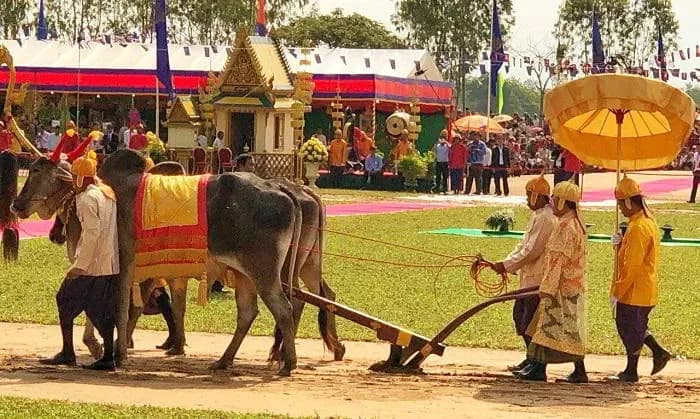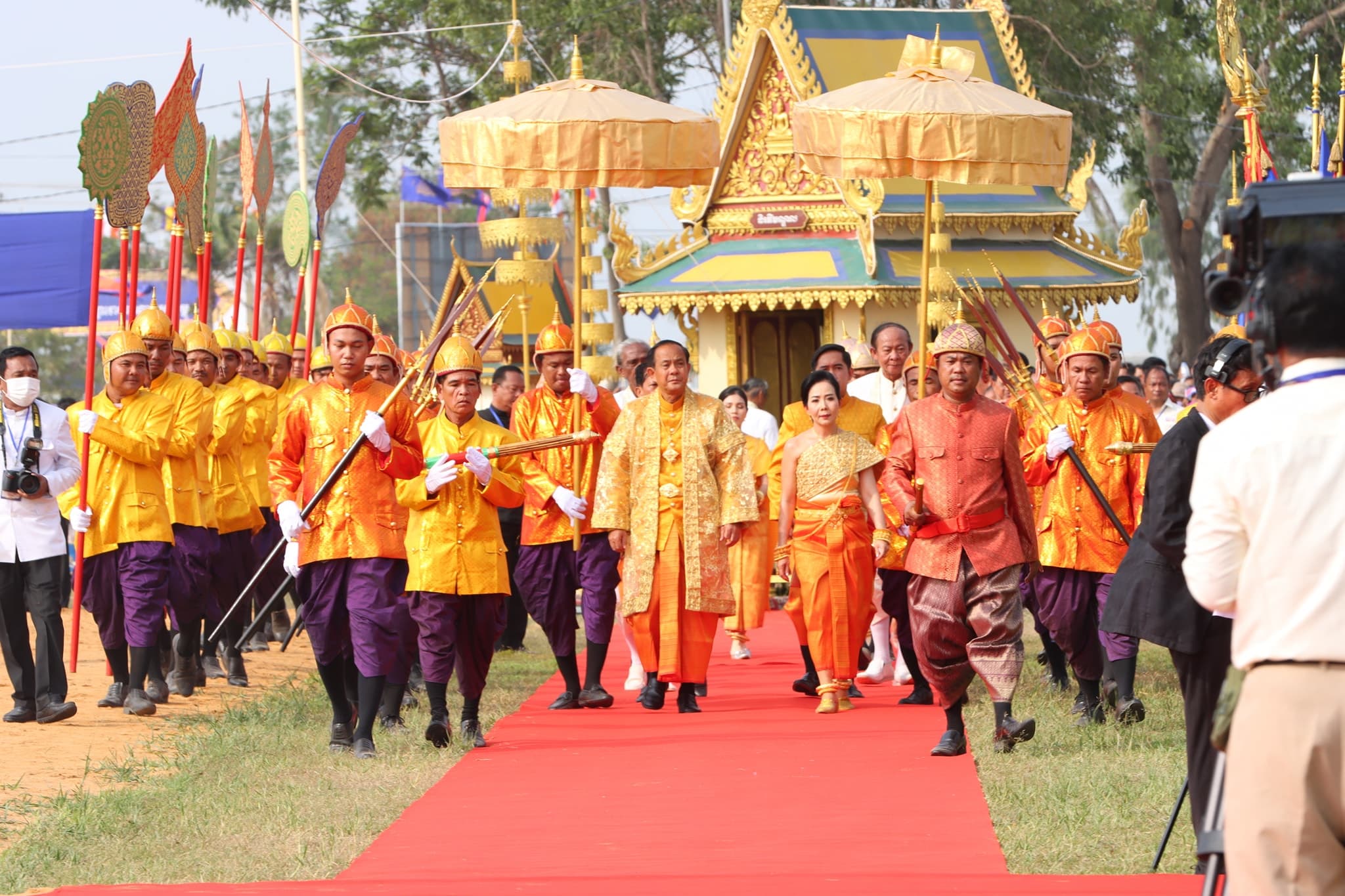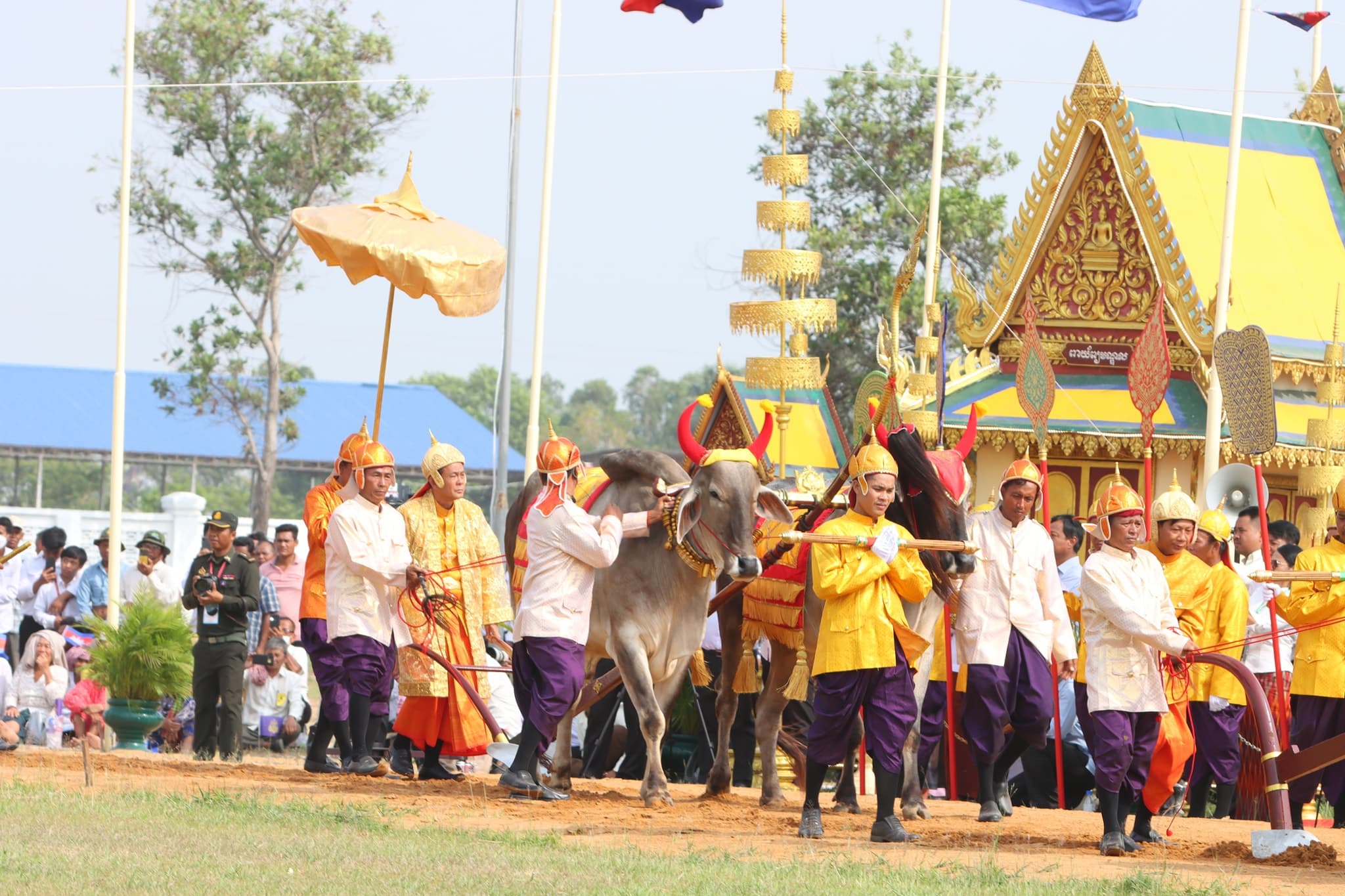Royal Ploughing Day or “Preah Reach Pithi Bonn Chrot Preah Neangkorl” is a national holiday celebrated every year with many purposes. This ceremony marks the beginning of the rainy season, reminding farmers to prepare and get ready for farming. It also plays a part in praying for rain from the gods so that there is enough rain for agriculture. You will find some brief information about this traditional ceremony below.
History

This royal ceremony was first initiated by a Khmer king who was greatly concerned with the farming conditions. Since then, Royal Ploughing Day has become an annual celebration for centuries. The date for the ceremony is on the 4th day of the 6th lunar month’s waning moon which is usually in May. Traditionally, this ceremony is led by the King of high officials. As for the past several years, Royal Ploughing Day is held under the presidency of His Majesty Norodom Sihamoni.

However, the King himself does not perform in the ceremony like in the olden days as there are representatives. The representative of the King is called “Sdach Meak” while the representative of the Queen is called “Preah Mehuo”.
The Royal Oxen

The royal oxen or “Ko Usapheak Reach” in Khmer play another important role in the ceremony. The appearance of the royal oxen is different from the rest of the oxen that you normally see. They are very large and tall, with curved horns, and they are dark in color. There are 2 royal oxen, and they symbolize the start of the season and a good harvest to the people.
Before the ploughing begins, the Brahma will announce the prediction of each item. And then, he will splash the holy water onto the head of the royal oxen. During the ceremony, Sdach Meak begins the ploughing the field 3 times around while Preah Mehuo sows seeds from behind. At the end of the third round, the royal oxen will be released from their harnesses. There will be 7 golden trays of various items for the royal oxen to consume. The 7 items include: beans, corn, grass, rice, sesame seeds, water, and wine.
Each item symbolizes a different prediction for the future. The prediction will come out after the royal oxen consume the items. There is a strong belief and faith that royal oxen have an important role in determining the fate of the agricultural harvest. More than that, Cambodians also believe that they can foresee a range of events such as epidemics, excessive rainfall, violent crimes, etc.
Predictions
The predictions of the items never change, and they go as follows:
- Bean: If one of the oxen eats bean, there will be a good bean harvest.
- Corn: If one of the oxen eats corn, there will be a good corn harvest.
- Rice: If one of the oxen eats rice, there will be a good rice harvest.
- Sesame: If one of the oxen eats sesame, there will be a good sesame harvest.
The more the oxen eat the grain, the better the harvest of that grain will be.
- Grass: If one of the oxen eats grass, there will be a widespread of animal diseases.
- Water: If one of the oxen drinks water, there will be heavy rainfalls.
- Wine: If one of the oxen drinks wine, Cambodia will be populated with drunkards and robbers that may possible lead to terrible crimes.
The more the oxen eat or drink the items, the more severe the problem will be.
Related Post: Things You Don’t Know About Ek Kite
